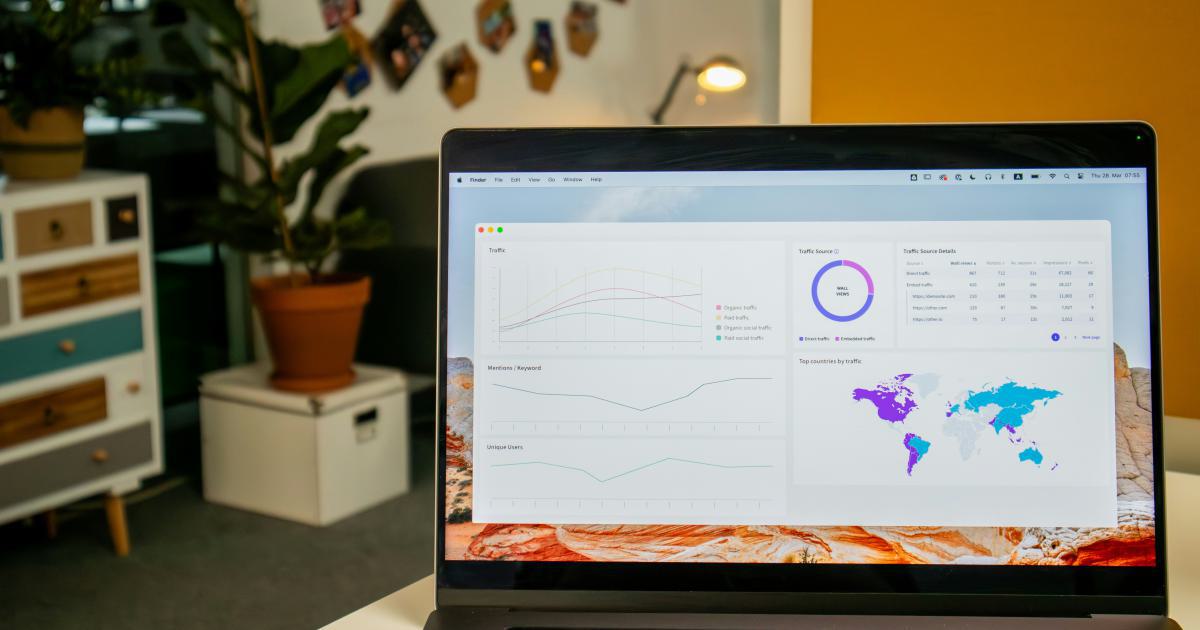Enhancing Trade Execution with Machine Learning

In today’s highly competitive financial markets, the convergence of technology and trading has created unprecedented opportunities. With the emergence of machine learning trade execution strategies, traders and financial institutions are harnessing advanced algorithms to optimize trade decisions, reduce latency, and manage risks more effectively. Machine learning trade execution involves employing sophisticated models that learn from historical data to predict and respond to market movements, ultimately upgrading the performance of traditional trading systems. This article delves into the transformative power of machine learning in trade execution, illustrating its benefits, methodologies, challenges, and real-world applications.
Introduction: The Evolution of Trade Execution
Trade execution has evolved significantly over the past few decades. In traditional markets, trade execution often involved manual processes or rule-based automated systems that lacked the agility to adapt to rapidly changing market conditions. However, with the advent of digital technology and the proliferation of data, the trading landscape has undergone a radical transformation. Fundamental to this transformation is the integration of machine learning—a branch of artificial intelligence that optimizes decision-making by learning patterns from historical data.
The Role of Machine Learning in Modern Trading
Machine learning models are ideally suited for environments where data is abundant and market dynamics can change in complex ways. By leveraging these models, trading systems can adapt in real time to unforeseen changes in market conditions. In contrast to fixed-rule algorithms, machine learning models evolve, learning new patterns and refining predictions as new data emerges. This adaptability makes them a powerful component in contemporary trade execution, enabling dynamic response to market fluctuations.
Key Benefits of Machine Learning in Trade Execution
Speed and Efficiency: Machine learning algorithms can process thousands of data points per second, making them highly efficient for trade execution in fast-moving markets.
Adaptability: These models continuously learn from new market data, allowing for ongoing improvements in decision-making processes.
Risk Management: By identifying subtle patterns and correlations that human traders may miss, machine learning can enhance risk management protocols.
Cost Reduction: Automated systems powered by machine learning reduce reliance on manual trading, lowering operational costs.
Enhanced Accuracy: With improved data analysis capabilities, machine learning models provide more accurate predictions that lead to better trade decisions.
Historical Context and Technological Advancements
Historically, the evolution of trade execution paralleled advancements in technology. Early trading systems relied heavily on human expertise and intuition. As computational power increased, algorithmic trading began to replace manual processes, leading to the development of rule-based systems. However, these systems were limited by their inability to adjust to unexpected market shifts. The introduction of machine learning marked a new era, enabling systems to generate insights and predictions based on vast amounts of historical data. This evolution has not only improved trade execution speeds but also enhanced the analytical depth available to traders.
As financial institutions continue to seek competitive advantages, the application of machine learning in trade execution presents a promising frontier for innovation. The integration of these technologies represents a significant step forward in harnessing the power of artificial intelligence to drive trading performance.

Understanding Machine Learning Trade Execution
Machine learning trade execution provides a framework that allows trader systems to learn from historical market data to forecast potential price movements, adjust order sizes, and execute trades more efficiently. This section explores the underlying principles of machine learning applied to trade execution and the crucial role of data in shaping these technologies.
Fundamentals of Machine Learning in Trading
At its core, machine learning involves training models on historical data to capture underlying patterns. In trading, these patterns might include price trends, volume movements, or complex interactions between multiple market factors. The process typically involves:
Data Collection and Cleaning: Gathering extensive datasets from various sources such as exchange feeds, financial news, and social media.
Feature Extraction: Identifying relevant variables that influence market movements.
Model Training: Using statistical and computational techniques to train a model on historical data. Algorithms like neural networks, support vector machines, and decision trees are frequently applied.
Testing and Validation: Assessing model performance using unseen data to ensure the model’s reliability.
Deployment and Execution: Integrating the machine learning model into the trading system to execute trades in real time.
The rich data dependencies and computational demands of this process necessitate robust infrastructures. Cloud computing and high-performance computing clusters have become essential in the current landscape to facilitate rapid processing and real-time decision-making.
Types of Machine Learning Models Used in Trade Execution
Among the wide array of machine learning models, several are particularly significant in the context of trade execution:
- Supervised Learning: In supervised learning, models are trained on labeled datasets. For instance, historical price movements are tagged with indicators such as ‘price rise’ or ‘price fall’, enabling the algorithm to learn how specific input variables influence outcomes.
- Unsupervised Learning: This approach is useful for detecting hidden patterns or clusters in the data that might not be immediately obvious. Clustering algorithms can identify periods of market stress or unusually high volatility.
- Reinforcement Learning: Perhaps one of the most promising techniques in financial trading, reinforcement learning involves algorithms that learn through trial and error. The model is rewarded for successful trades and penalized for losses, gradually learning optimal strategies over time.
Each model type brings unique strengths and challenges. For example, while supervised learning can offer high accuracy under stable market conditions, reinforcement learning may better adapt to volatile environments where market dynamics shift rapidly.
Integration Challenges and Data Considerations
Implementing machine learning trade execution systems in live trading environments is not without challenges. Issues such as data quality, latency in data transmission, and the interpretability of machine learning decisions are critical factors that need to be addressed. High-quality datasets free from bias and errors are essential; otherwise, the model might learn from noisy data, leading to flawed predictions.
Data latency, where there are delays in acquiring or processing information, can also lead to execution delays—a serious concern in high-frequency trading settings. Furthermore, the black-box nature of many machine learning algorithms means that understanding and explaining the decision-making process can be challenging. Regulators and risk managers often require transparency in automated decision processes, making model interpretability a significant area for continuous improvement.
Regulatory Considerations
The regulatory landscape for machine learning trade execution is still evolving. Financial markets are subject to stringent regulations aimed at ensuring transparency, fairness, and stability. As machine learning algorithms become more prevalent, regulators are increasingly scrutinizing their use to ensure that these systems do not contribute to market instability or unfair trading practices.
Financial institutions must adopt sound governance frameworks, incorporating robust risk management protocols and comprehensive auditing mechanisms, to ensure that machine learning implementations comply with regulatory requirements. This includes regular stress testing and simulation of market scenarios to validate the resilience of trade execution algorithms.

Optimizing Strategies with Machine Learning Trade Execution
The integration of machine learning into trade execution significantly optimizes both speed and precision. This section highlights how market participants can harness the power of machine learning to enhance their trading strategies and outlines actionable steps for implementation.
Designing a Robust Machine Learning Trading System
Creating a robust trading system using machine learning involves several crucial steps. The process is iterative, requiring continuous refinement and adaptation to market conditions. Below is a detailed blueprint of a successful machine learning trade execution system:
Define Objectives and Constraints: Begin by outlining clear objectives, whether it is improving execution speed, reducing transaction costs, or managing risk exposure effectively. Identify any market constraints, such as liquidity conditions or regulatory limitations.
Collect and Process Data: Leverage historical market data, including price feeds, order book information, and macroeconomic indicators. Employ advanced techniques for data cleaning and normalization to ensure that the input data is both accurate and comprehensive.
Model Selection and Development: Assess various machine learning models to determine which best fits the trading strategy. For example, reinforcement learning can be particularly effective in discovering optimal trading sequences, while supervised learning may help in forecasting price movements.
Backtesting and Simulation: Utilize sophisticated backtesting environments to simulate how the model would have performed under historical market conditions. This process should include rigorous stress tests, covering a range of market scenarios to ensure reliability under volatility.
Deployment and Real-time Execution: Integrate the model into a production trading system. This step involves ensuring that the infrastructure can handle real-time data feeds, execute trades with minimal latency, and incorporate risk management checks.
Monitoring and Feedback: Continuous monitoring is essential to promptly identify performance issues or anomalies. Implementing an automated feedback loop allows the system to learn from its trading outcomes and adapt to emerging patterns.
Each stage of system development requires meticulous attention to detail and a deep understanding of both trading dynamics and machine learning techniques. Collaboration between quantitative analysts, data scientists, and market experts is crucial to successfully bridge the gap between theory and practice.
Enhancing Predictive Accuracy with Advanced Algorithms
Predictive accuracy is a cornerstone of successful trade execution. Machine learning enables traders to harness a myriad of advanced algorithms that refine predictions through constant learning. Key strategies include:
- Ensemble Methods: By combining multiple machine learning models, ensemble methods reduce the risk of individual model error. Techniques like bagging and boosting help enhance the robustness of predictions.
- Deep Learning: Neural networks, especially deep learning architectures, have shown promise in capturing complex market behaviors. Convolutional neural networks (CNNs) and recurrent neural networks (RNNs) are frequently employed to model temporal and spatial market data.
- Feature Engineering: The quality of predictions often hinges on the selection and transformation of input features. Expert domain knowledge combined with automated feature selection techniques can significantly improve model performance.
- Real-Time Adaptation: Deploying models that continuously learn in real time ensures that predictive accuracy does not degrade over time. Adaptive learning algorithms recalibrate using live data feeds, maintaining efficiency in volatile market environments.
Effective integration of these techniques not only enhances predictive accuracy but also promotes greater confidence in automated trade execution systems. Traders can rely on systems that are dynamic, self-correcting, and capable of navigating complex market terrain.
Case Study: Machine Learning Trade Execution in Action
Consider the case of a leading hedge fund that sought to optimize its trade execution process using machine learning. The fund began by gathering terabytes of historical market data and employed a combination of supervised and reinforcement learning techniques. Their model was designed to detect micro patterns in order flow and price fluctuations, enabling real-time trade decisions that drastically reduced slippage and transactional inefficiencies. During high-volatility periods, the adaptive model outperformed its static counterparts by dynamically adjusting strategies and minimizing adverse market impact. The quantitative team reported that the system not only improved trade timing but also enhanced overall risk-adjusted returns.
In this case, the integration of advanced algorithms allowed the hedge fund to navigate unpredictable market movements, demonstrating the tangible benefits of incorporating machine learning trade execution. Through precise calibration and rigorous validation, the fund achieved a robust, adaptive trading infrastructure capable of sustaining high performance under various market conditions.

Managing Risks and Ensuring Stability
While the potential benefits of machine learning trade execution are substantial, integrating these systems introduces a host of risks and challenges that must be carefully managed. This section explores the various risk factors and outlines strategies for maintaining stability in machine learning-driven trading environments.
Identifying Key Risks in Machine Learning Trade Execution
Machine learning trade execution systems are subject to several risk factors, which include:
Model Overfitting: Overfitting occurs when a model is excessively tailored to historical data, compromising its ability to generalize to new market conditions.
Data Quality Issues: Inaccurate or incomplete data can lead to misaligned predictions and trading errors.
Latency and Infrastructure Failures: The reliance on real-time data processing introduces risks related to network latency, hardware failures, or software bugs.
Systemic Market Risks: Automated trades can sometimes amplify market volatility. In scenarios where multiple systems converge on similar predictions, cascading effects may trigger broader market instability.
Regulatory Compliance: As regulations continue to evolve, ensuring that automated systems adhere to strict compliance standards is crucial to avoid legal repercussions.
Risk Mitigation Techniques
Effective risk management in machine learning trade execution requires a multi-layered approach:
- Robust Backtesting: Prior to live deployment, extensive backtesting across different market scenarios is essential to validate the resilience of the trading model.
- Regular Model Audits: Continuous auditing and performance reviews should be established to detect overfitting or deviations from expected behavior.
- Diversification of Strategies: Relying on a diversified set of models and strategies helps mitigate the risk associated with a single point of failure.
- Real-Time Monitoring Systems: Implementing advanced monitoring tools that track execution metrics in real time can alert traders to potential issues before they escalate.
- Clear Governance Frameworks: Establishing clear protocols for system overrides, manual intervention, and regulatory reporting ensures that the machine learning models operate within acceptable risk parameters.
By addressing these concerns proactively, financial institutions can safeguard their trading operations against unforeseen anomalies, ensuring a stable and resilient system.
The Role of Explainability in Risk Management
Given that many machine learning algorithms function as “black boxes,” there is a significant focus on enhancing the interpretability of these models. Explainable AI (XAI) techniques help demystify model decisions, providing insights into the factors driving specific trade signals. This transparency is critical for compliance purposes, as regulatory bodies increasingly require clear explanations of decision-making processes. By employing methods such as feature importance analysis, partial dependence plots, and surrogate models, institutions can validate the integrity of their trading models and refine risk management practices.
Future Trends and Innovations in Trade Execution
As we look ahead, the landscape of trade execution is poised to witness further transformations driven by emerging technologies and research in machine learning. The continuous integration of artificial intelligence into trading strategies promises to unlock new capabilities and address challenges posed by ever-evolving market dynamics.
Emerging Technologies Enhancing Trade Execution
Several innovative technologies are complementing machine learning trade execution, pushing the boundaries of what is possible. Notably:
- Quantum Computing: Although still in its early stages, quantum computing offers the potential to dramatically accelerate the processing power behind machine learning algorithms. By solving complex optimization problems faster than classical computers, quantum computing could facilitate near-instantaneous trade execution decisions.
- Blockchain and Distributed Ledgers: Incorporating blockchain can enhance transparency and security. Distributed ledger technologies ensure that all trade data is tamper-proof and verifiable, which is crucial for both compliance and risk management.
- Internet of Things (IoT): Sensors and connected devices can provide real-time data streams that enrich the datasets used for training trading models. This hyper-connected ecosystem may lead to more granular and accurate market predictions.
By merging these technologies with sophisticated machine learning frameworks, the next generation of trading systems could achieve unparalleled precision and agility.
The Impact of Regulatory Evolution
As technology advances, regulatory bodies are continuously updating frameworks to keep pace with innovation. The future will likely see tighter integration of explainability requirements, so that system decisions remain transparent and fair. Regulatory agencies might also mandate detailed audits of machine learning models, pushing financial institutions to invest further in developing robust and interpretable systems.
Global Market Implications and Competitive Dynamics
The adoption of advanced machine learning techniques in trade execution is reshaping global market dynamics. Firms that successfully integrate these systems gain a competitive edge through increased efficiency, lower operational costs, and improved risk management. As machine learning trade execution becomes more mainstream, we can expect heightened competition among market participants and a redefinition of market standards. In this environment, the ability to rapidly adapt and innovate is paramount.
Actionable Future Strategies
For market participants seeking to leverage future trends in machine learning trade execution, a proactive, multi-phase strategy is advisable:
Invest in Research and Development: Continuously research emerging technologies and methodologies to stay at the forefront of innovation.
Collaborate with Technology Partners: Form strategic partnerships with technology providers, academic institutions, and industry consortia to access cutting-edge resources and insights.
Upgrade Infrastructure: Modernize IT systems, ensuring that they can support real-time data processing and advanced analytics.
Enhance Talent Capabilities: Recruit and develop a team that blends expertise in finance, data science, and machine learning, empowering the organization to effectively implement and oversee advanced trading systems.
Iterative Testing and Adaptation: Implement agile development cycles that allow continuous testing of new strategies, incorporating feedback and performance metrics to improve systems over time.
In the coming years, the fusion of machine learning, cloud computing, and emerging technologies will likely redefine the trading landscape, offering new opportunities and posing novel challenges. Financial institutions that focus on adaptability, transparency, and innovation are poised to thrive in this dynamic environment.

Conclusion: Charting the Future of Trade Execution
The incorporation of machine learning into trade execution marks a seminal shift in how financial markets operate. The ability to process vast data sets in real time, coupled with advanced predictive models, equips traders with an unmatched tool to navigate the complexities of modern markets. As described throughout this article, machine learning trade execution not only enhances speed and efficiency but also improves predictive accuracy, risk management, and cost effectiveness.
While challenges such as data quality, system latency, and regulatory scrutiny remain, the overall benefits of integrating machine learning into trading strategies are both profound and far-reaching. Financial institutions that embrace these innovations stand to gain a significant competitive advantage by optimizing execution, reducing human error, and enhancing overall trading performance.
Looking ahead, the landscape of trade execution will likely continue to evolve at an accelerated pace. Emerging technologies such as quantum computing, blockchain, and IoT are set to further transform the way markets function, while regulatory frameworks will adapt to ensure a level playing field. Continuous investment in research, infrastructure, and talent will be essential for harnessing the full potential of machine learning trade execution.
In summary, the journey toward enhanced trade execution with machine learning is one of constant learning and adaptation. With a commitment to rigorous testing, real-time monitoring, and proactive risk management, market participants can achieve a new level of precision and agility. The future of trade execution is not merely about automating processes—it is about creating dynamic, adaptive systems that leverage the power of data to drive smarter, more effective trading decisions.
Whether you are a seasoned trader or a financial institution exploring new methodologies, incorporating machine learning trade execution into your strategy offers a pathway to superior performance in an increasingly unpredictable market environment. The road ahead is both challenging and exciting, promising enormous potential for those willing to invest in the future of trading technology.
As markets continue to evolve, the integration of sophisticated technologies will remain a critical component in staying ahead of the competition. By embracing the powerful capabilities of machine learning, the financial industry can unlock unprecedented levels of efficiency, transparency, and profitability in trade execution.
Ultimately, the insights and strategies explored in this article serve as a comprehensive guide for anyone looking to leverage the vast potential of machine learning to transform traditional trading paradigms. With continuous innovation and a forward-thinking approach, the integration of machine learning in trade execution is set to redefine the future of financial markets.
Unleash the Power of Automated Trading Analysis
Are you struggling to keep up with the fast-paced trading world? TrendSpider empowers you with cutting-edge tools for optimal strategy execution.
Our automated technical analysis suite eliminates guesswork, backtests strategies, and delivers real-time alerts, saving you valuable time and effort.
Emily Leroux
53 posts written





